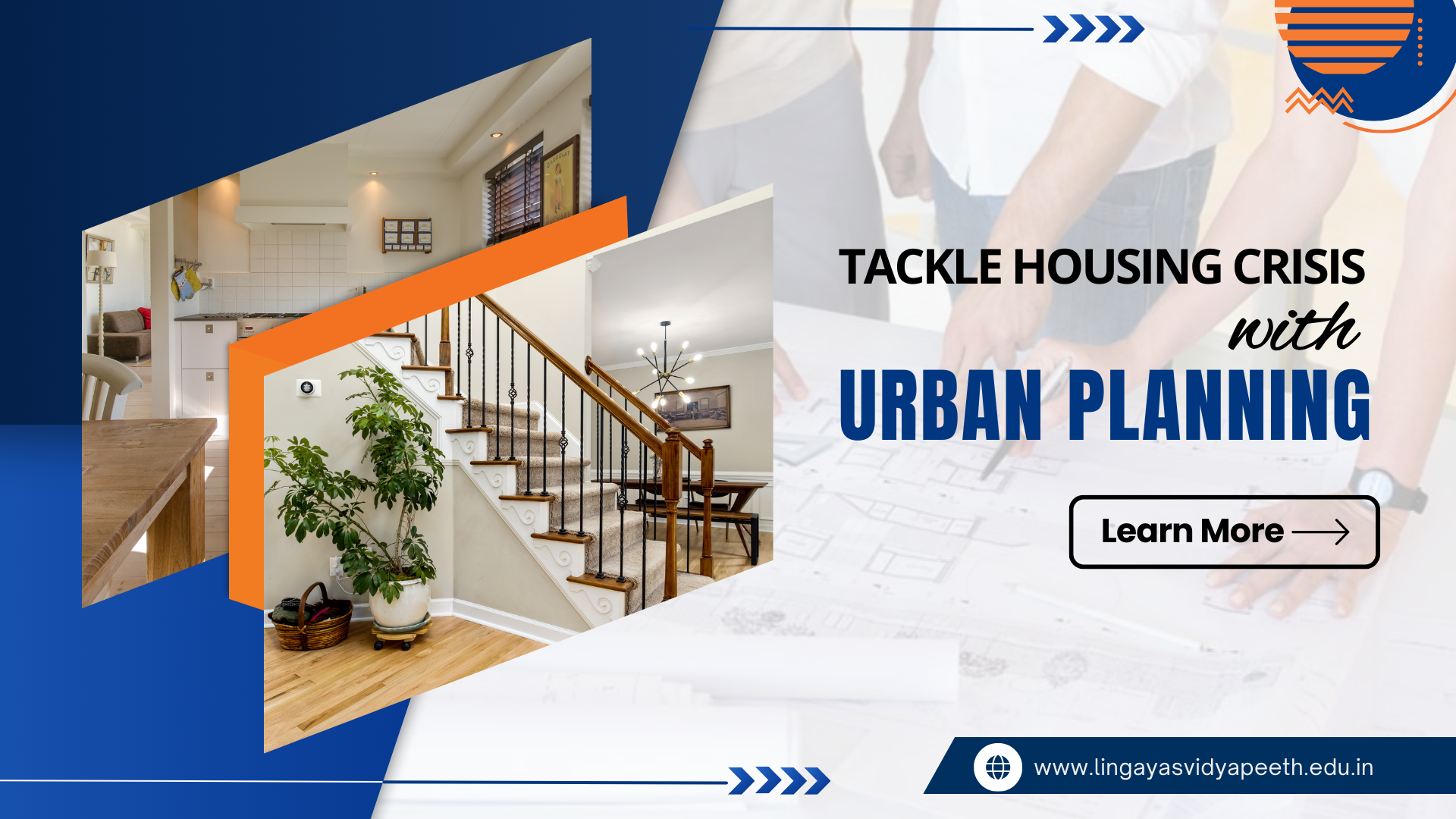Home » How Urban Planning Can Tackle the Housing Crisis?

Many people’s dreams of becoming homeowners appear to be slipping away. Skyrocketing home costs and a scarcity of affordable choices are resulting in a full-blown disaster. But there is a ray of hope: urban planning, the discipline that forms our cities, may be a tremendous weapon for breaking the cycle.
Urban planning plays a crucial role in creating affordable housing solutions by strategically designing city spaces to maximize land use and accessibility. Planners use zoning laws to increase the availability of affordable housing units, promote mixed-income communities, and incorporate public transportation to reduce living costs.
The present housing crisis is a complicated topic, but various planning-related elements contribute to it.
Urban planning has the capacity to significantly impact the housing crisis. Here’s how.
Backbone of Every Architectural Design Solution
A Bachelor’s degree in Planning provides you with the skills and information you need to be a constructive change agent.
Play of Light and Shadow in Architecture
The future of housing rests on innovative planning concepts. Consider a world in which you contribute to:
3D Modelling Has Impacted the Architecture
Conclusion:
A Bachelor’s degree in planning enables you to play a role in addressing the housing issue. It is an opportunity to create cities that are inclusive, sustainable, and provide a place for everyone to call home. If you’re interested in establishing equal and prosperous communities, pursue a career in urban planning.
Do you want to pursue a B.Plan program from a leading university in Delhi NCR? Choose none other than Lingaya’s Vidyapeeth! Lingaya’s Vidyapeeth is Best Colleges in Faridabad for B.Plan that makes you future ready and equips you with all the skills necessary in the domain of planning and design, with top faculty, cutting-edge facilities, and immersive design projects, unleash your creativity like never before. Apply now and give your career a boost!
From
Ar. Aditi Arora
HOD
School of Architecture and Planning
Lingaya’s Vidyapeeth
Top Architecture Colleges in Delhi NCR
RECENT POSTS
CATEGORIES
TAGS
Agriculture Agriculture future AI Architecture artificial intelligence BA English BA Psychology BTech Engineering Business management career Career-Specific Education career guide Career Opportunities career option career scope Civil engineering commerce and management Computer Science Computer science engineering Data science degree education Engineering engineering college Engineering students English Literature english program Exam tips Fashion Design Fashion design course Higher Education Journalism journalism and mass communication law Law career Machine Learning MA Psychology Master degree mathematics MBA Mechanical Engineering Pharmacy Psychology Research and Development students
University Address: Nachauli, Jasana Road, Faridabad, Haryana
Toll Free: 1800-120-4613
Mobile : 8447744303 | 8447744304 | 8447744306 | 8447744309
Address: C-72, Second Floor, Shivalik, Near Malviya Nagar,
Above HDFC Bank, New Delhi 110017
Ph.No. - 011-46570515 / 45138169 / 41755703 / +91-7303152412
Jagmani Kutir, Ground Floor, Road No-1, Rajeev Nagar,
Near Darbar Marriage Hall, Patna-800024, Bihar
Contact No: 9818352069/8130120095
Mail: [email protected]
Copyrights © 1998 - 2025 Lingaya's Vidyapeeth (Deemed To Be University). All rights reserved.
It is important to note that the following email IDs and domains are fraudulent and do not belong to our university.
LV only conducts physical/online verification of any document related to examination on the following email id: